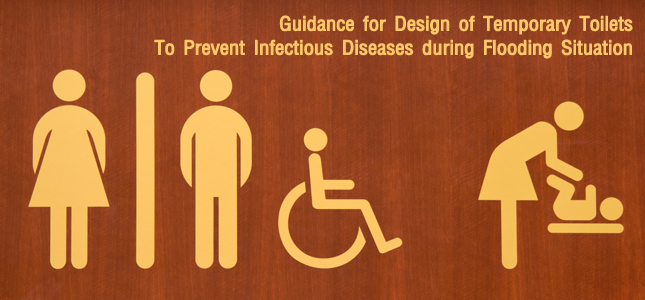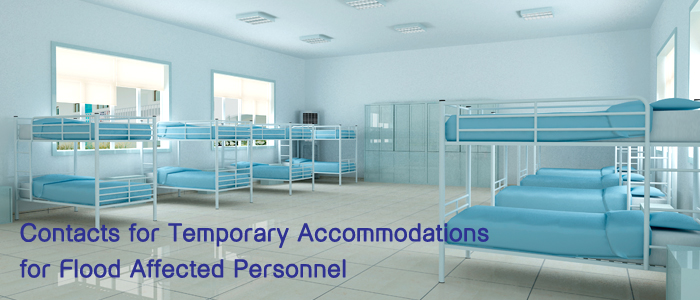- Details
-
Category: Flood News
-
Published: Friday, 10 February 2017 13:48
-
Hits: 396

As the current flooding in many areas of the country has led to the shortage of sanitation facilities and hygienic restrooms, volunteers from several sectors are helping to design and construct temporary toilets for flood-affected people. Temporary portable toilets are made with caution that it must ward off the dispersal of serious diseases such as cholera during the flooding situation.
The prevention of the outbreak of plague is of utmost important for making permanent and temporary toilets. For temporary toilets made from black sacks, the simple means is adding chemicals to disinfect and to reduce the dispersal or accumulation of bacteria in the flooded water for short and long term. Other methods to disinfect floating toilets or those made from black sacks are also available as follows:
 |
For temporary toilets made from black bin bags, a proper amount of calcium hydroxide, Ca(OH)2, added to the black bin bag can sterilize the waste because the increasing alkalinity level helps slow down the growth of disease-inducing bacteria while the treated waste can be used as fertilizer. The proper amount of calcium hydroxide is 300 grams (or 0.3 liter or 1 cup) per 10 liters of the waste so that the alkalinity level is increased up to around 12pH. For the 20-liter black sack, 300 grams of calcium hydroxide is sufficient for 5-10 times of adding (or up to 15 times for excrement). Three various methods of adding calcium hydroxide are suggested as follows:
1. Adding 15 grams (or 16 milliliters or 2 tablespoons) of calcium hydroxide after using the toilet.
2. Adding 150 grams before using the toilet and adding another 150 grams thereafter.
3. Adding 300 grams before using the toilet
The first method is considered the most effective but the second and the third ones are also applicable. Please bear in mind that always use two black bin bags for sanitation and tightly tie the bag closed to prevent leakage. Also, to conduct these sterilizing processes safely, it should be done in well-ventilated outdoor areas because the reaction of calcium hydroxide with the waste produces ammonia gas that gives off unpleasant smell. As for the Effective Microorganism or so-called EM, its degradation effect does not last long and therefore it needs to be added more frequently. Besides, the EM compound does not have sterilization efficacy.
 |
For floating toilets, chlorine or sodium hypochlorite (NaOCI), which is an active ingredient in household bleach such as Haiter or Chlorox, can be added to a clarifier tank before being released to the water treatment system. The proportion between sodium hypochlorite and the waste is 1:50 by and the use of a drip bottle is recommended so that the fluid is released slowly. Two liters of the sodium hypochlorite solution is sufficient for one-day use.
Other choice is chlorine powder or the commercial-grade Ca(OCl)2 containing 65% chlorine which is less expensive and used in swimming pools or small water system. The proportion between the chlorine powder and the waste is 1.6 gram: 1 liter. When adding the chlorine powder and bleaching fluid, please handle with extra care and conduct in well-ventilated areas.
These sterilization methods help prevent the dispersal of bacteria and minimize the possibilities of infectious diseases caused by the use of temporary toilets during the flooding situation.
Well wishes from lecturers at the Department of Environment Engineering, Faculty of Engineering, Chulalongkorn University.









